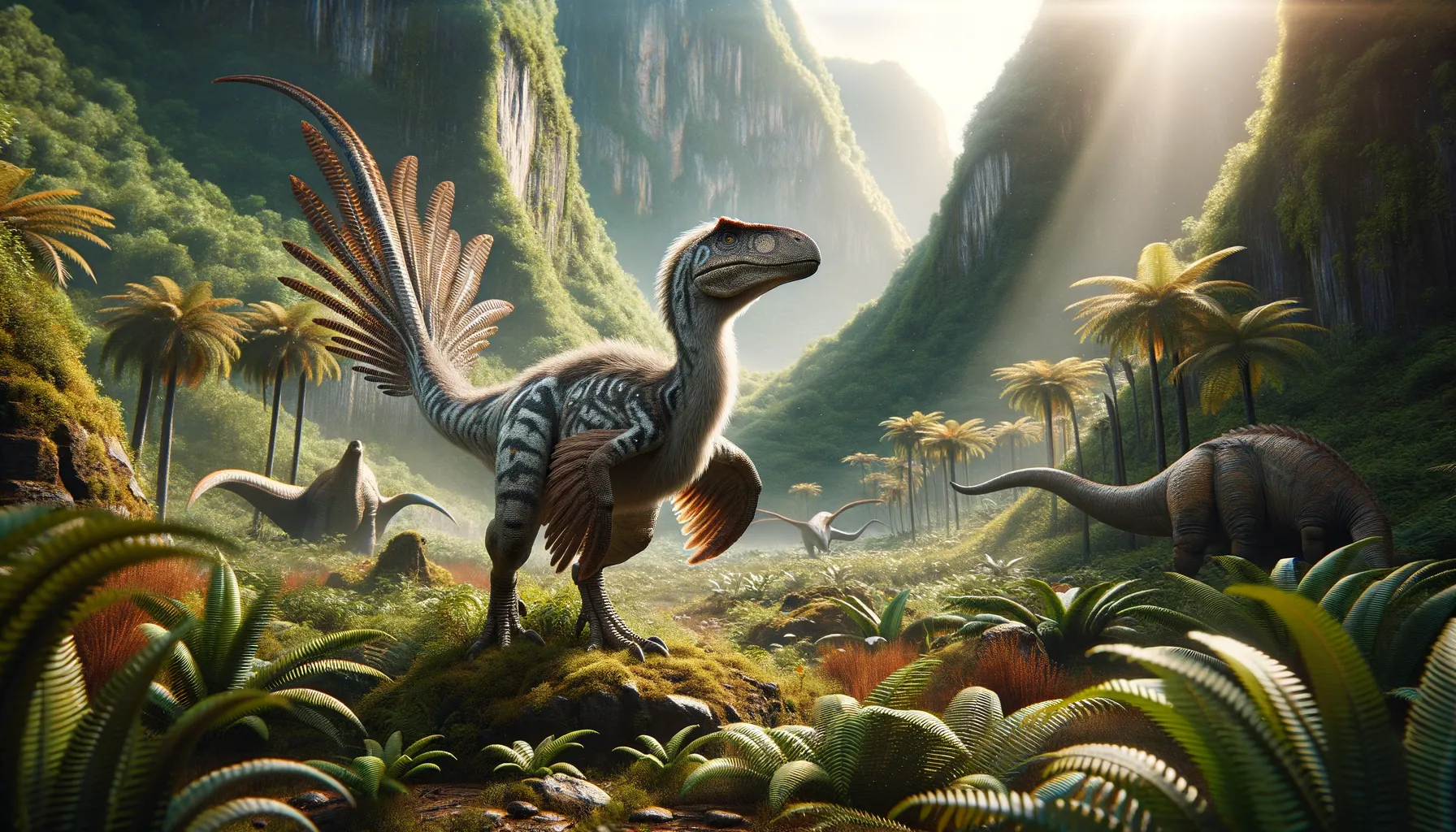
Huanansaurus
Explore the ancestry of modern birds.
Period
Cretaceous
Length
Measured about 1.5 meters in length.
Height
Stood approximately 1 meter tall.
Weight
Estimated to weigh around 30 kilograms.
Huanansaurus was a small theropod dinosaur from the Late Cretaceous period, known primarily from fossils found in Asia. Its closest relatives are oviraptorids, which were bird-like in appearance and shared similar features, such as a beak and feather-like structures. The discovery of Huanansaurus adds further insight into the diversity and distribution of this intriguing group of dinosaurs, particularly regarding their evolutionary relationship with modern birds.
Diet
Huanansaurus was likely an omnivore, meaning it fed on both plants and small animals. Its beak probably allowed it to crack open hard objects like seeds and nuts, as well as catch small prey.
Hunting
Being relatively small, Huanansaurus likely preyed on insects, small reptiles, or mammals. It might also have scavenged for carcasses, using its beak to help tear flesh from bones.
Environmental challenges
Huanansaurus lived in environments that may have been prone to seasonal changes, requiring adaptability to survive. With competition from other small theropods and changing plant resources, finding food was a constant challenge. Additionally, avoiding larger predators would have been crucial for its survival in its ecosystem.
Speed
Huanansaurus was likely a slow-moving dinosaur.
Lifespan
It probably lived for around 20 to 30 years.
First discovery
Huanansaurus was first discovered in China.
Fun Facts
- Huanansaurus is part of a fascinating group of dinosaurs known as oviraptorosaurs, which were feathered and often had beaks similar to birds.
- The name 'Huanansaurus' means 'Huanan lizard', referring to the region in China where its fossils were discovered.
- Huanansaurus lived approximately 90 million years ago during the Late Cretaceous period.
- Unlike many dinosaurs, Huanansaurus is thought to have been an omnivore, eating both plants and small animals.
- Huanansaurus had a relatively short, bony tail compared to some other dinosaurs.
- The discovery of Huanansaurus helped scientists better understand the diversity and evolution of oviraptorosaurs.
- Despite its bird-like traits, Huanansaurus was not a direct ancestor of modern birds but showcases the bird-like features in certain dinosaur species.
Growth and Development
Huanansaurus likely experienced rapid growth during its early years, similar to modern birds and its theropod relatives. Juveniles might have been more vulnerable to predation, leading to faster development to reach maturity quickly. Changes in diet as they grew could indicate shifts from more fragile food sources to tougher, more varied diets.
Habitat
Huanansaurus inhabited forested areas, which offered plentiful resources and shelter. The landscape was likely lush with vegetation and small streams, making it an ideal environment for both their prey and plant diet. They might have thrived in open canopied areas that allowed for ease of movement.
Interaction with other species
Given its size, Huanansaurus probably had minimal direct interactions with larger predators, albeit cautious of their presence. It might have coexisted with other small theropods, competing for similar food resources. Occasionally, they encountered larger herbivores, which could provide environmental disturbances such as knocked down trees.
Natural lifespan
Its natural lifespan is estimated to be about 20 years.
Reproduction
Egg-laying was standard, with clutches likely buried or hidden for protection. Parents may have guarded nests from environmental threats and predators. Both sexes possibly participated in caring for the eggs and young hatchlings until they could fend for themselves.
Social behaviour
Huanansaurus likely exhibited some social behaviors, possibly living in small groups or family units for foraging and protection. This behavior might have helped protect against predators and made hunting more effective. Communication could have included visual displays and vocal calls similar to bird relatives.
Fossil locations
Fossils of Huanansaurus were primarily found in the Ganzhou region in Jiangxi province, China. These findings have provided important information about its structure and place in the theropod lineage. The fossils help establish significant connections with other oviraptorids found across Asia.
